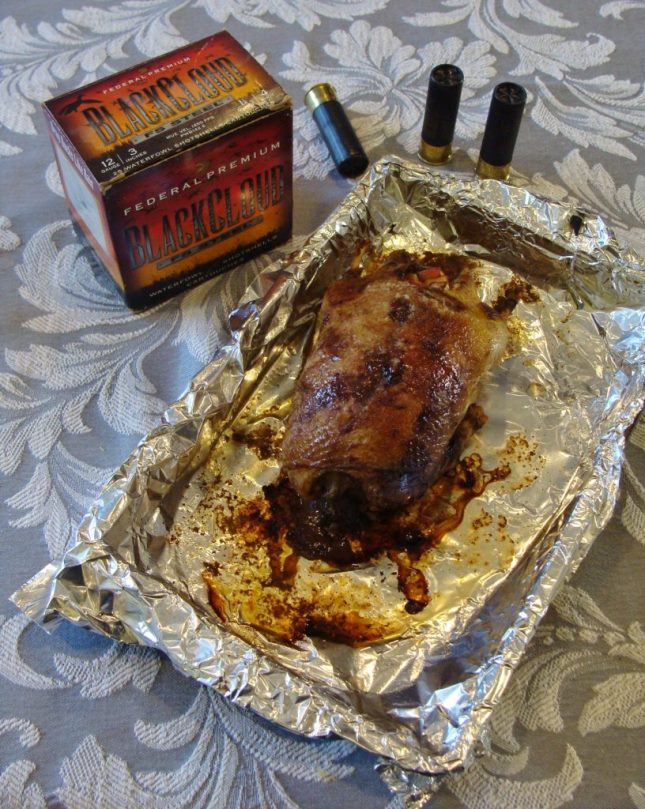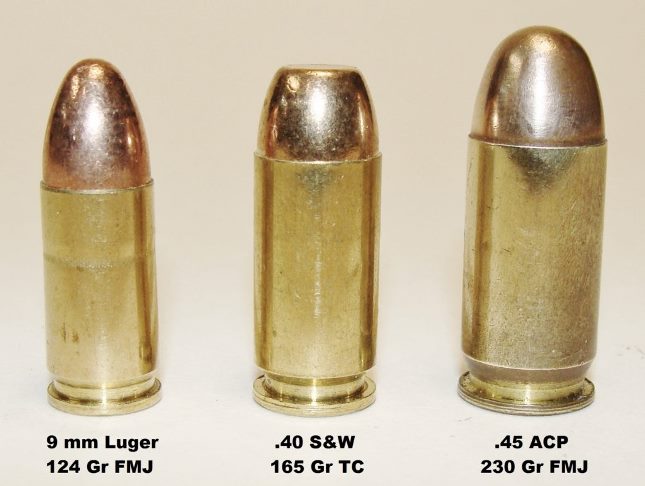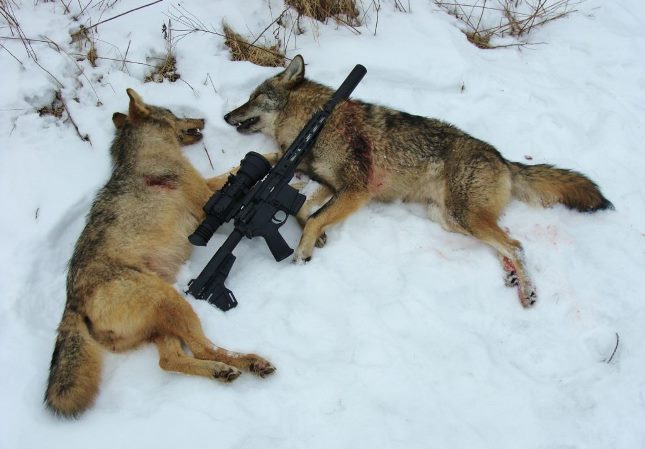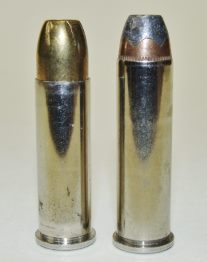Some time ago SHTFblog published interesting piece titled Top Ten BEST Guns For Survival. As evidenced by the numerous comments on the piece, it was a popular read! And, not surprisingly, some of the feedback offered differing opinions. But what does it take to start building a survival gun collection?
by Steve Markwith
Coronavirus Pandemic and New Gun Buyers
The current Coronavirus scare has put everyone’s knickers in a bunch. Good indicators beyond a scarcity of hand sanitizer are shortages of toilet paper and ammo. It’s a safe bet that interest in firearms ownership is also on the rise. Some folks might be adding a gun while others may be first-time buyers. Among the latter, a frequent question is “What’s the best gun?” One kicker is, beyond a perceived need, the query is often abstract.
Recommending “Best” Survival Guns
Truthfully, recommending the best survival guns can be tricky. The “best” gun is a slippery proposition, somewhat analogous to a stranger choosing your vehicle. They make many different types for good reasons. No doubt, yours will be chosen based on several factors from comfort to cost and anticipated needs. For example, I need a truck. Trouble is, my wife’s exit from our high F-150 pickup is more of a controlled crash. Thus, she sticks with her smaller SUV. But wait! The 4WD truck is perfect for hauling dead deer or their ripening left-over carcasses (the latter making ideal coyote bait). No way her groceries are going in that though.
Along a similar vein, when shopping for firearms, although olfactory issues should cease, factors like physique should count. Not that she’d want to, but my better half would struggle with a full-sized 12 gauge pump-gun. Just reaching its forearm could be a challenge. Beyond simple fit, the cumulative effects of recoil could produce negative consequences including a difficult-to-cure flinch. Of course, that’s why smaller-gauge youth/lady-models exist, along with smaller vehicles.
Considerations for Starting a Survival Gun Collection
Experience and Interest Matter
For my wife’s situation, neither experience or interest really exist, leaving me as the primary defender of the castle and re-stocker of the freezer. On a positive note, although toilet paper is becoming scarce, we don’t shop for meat or poultry. Shotguns resupply our feathered entries and rifles harvest our meat. And, since I’m the only one shooting, options for other lead-launching acquisitions are unfettered (possibly short of crew-served weapons).

Many other households or individuals probably fall somewhere in between. If so, especially where hunting is less of a concern, something other than a shotgun could be the better bet – but personal interest matters! Prospective gun picks should factor in operational complexity. Absent a commitment to ongoing practice, KISS (Keep It Simple Stupid) is a good practice. For that matter, it is for nearly everyone – especially when things turn ugly!
Gun Reliability is a Biggie
Gun reliability is a biggie, especially with survival-based concerns in the mix. Judging by the current COVID-19- related shortages, good luck ordering replacement gun parts if society fully unraveled. You’ll be on your own, so dependable firearm choices will matter. Hence, the following guidelines:
- Established Reputation for Dependability. Good track records offer some insurance against breakage.
- Easy to operate. Simple is better, especially with limited practice (a reality for many). But, things can still quit, so…
- Ready availability of parts. Using a proven system, you can predict breakages and stock up on spares.
- Common ammo. Popular calibers are usually cheaper. If you’re scrounging, odds will tip in your favor.

- Easy to maintain. Servicing is essential. Captive parts and easy disassembly help when on the go.
- Accessory friendly. Popular guns generally drive this market, resulting in more options that easily install.
- Good value. You need to budget for more than just the gun!
Looking at a handgun, necessities will include a holster, magazines, pouches, and ammo, etc. Add these up, with extra room for training and ongoing practice, to calculate a true bottom line. You’ll then have a “system cost,” which can mushroom without educated planning.
Consider Your Firearm’s “System Weight”
More firearms may not always be better. Unless you’re staying put, ten (or even less) could become a true albatross. Actually, carrying more than two on foot is seldom practical, even with sporting-weight guns (one being a handgun). Longer distances and rough terrain only make things worse. Ounces soon become pounds. I learned this decades ago in The Bad Old Days while humping a rucksack and an M-16. Beyond such necessities as food, explosives, and a “basic load” of ammo, water was the huge essential. Four quarts was about the practical limit: perhaps adequate for temperate climes, but maddeningly insufficient in tropical heat. Beyond a determined enemy, dysentery was a frequent threat. On a positive note though, trips to a gym were unnecessary.
Nowadays, I’m more likely to lug extra Twinkies, assuming I can manage their weight (an obvious challenge for the rest of me). Recently, I sprung for a lightweight O/U shotgun and shell combination just to navigate some challenging upland bird terrain. Which leads us to generalized hunting and the possible need for subsistence. Again, mobility should factor in, excluding systems that handle like truck axles. Might as well save weight for other essentials like Imodium A-D and a water purification method.
Do You Need Bilateral Operation?
Most firearms are built for right-handed shooters, roughly 80% of the market. Left-handed shooters should factor this in before investing in a system-based collection: bolt-action rifles being a prime example. And, some situations could involve shared use of firearms. If lefties are involved, ambidextrous designs can help. A lever-action or pump may seem arcane to some, but most can be run well off either shoulder after a modicum of practice. Actually, everyone should do this out of respect for Murphy’s Law: Anything that can go wrong will, usually at the worse possible moment!
What About Load Versatility?
Semi-auto systems are justifiably popular, but reliable function is achieved through a careful balance of recoil and/or pressure against opposing action parts and springs. Thus, ammunition must conform to specific pressure parameters. On the other hand, manually-operated systems (pump-guns, lever-actions, bolts, revolvers, etc.), have no such constraints.
Furthermore, some manually-operated systems can digest two or more different calibers. A .357 Magnum revolver that will accept milder .38 Special loads is one example (also true of many lever-action rifles; a combination worth considering). Beyond improved ammo sourcing, multi-caliber capability can also be used to regulate noise or power. Some reduced power loads are extremely quiet, even if not suppressed. If .22 Shorts are fired in a 24” .22 LR chamber they’ll sound more like mouse farts. CCI’s .22 LR “Quiets” aren’t much louder. These, and some other centerfire combinations, can expand practice opportunities. Beyond reducing recoil, they can also lower costs; .38 Specials are much cheaper than any full-power .357 loads.

Similar Function for Skills and Experience
Regarding skills and experience, firearms with a similar style of function help. This is an important for any collection of survival guns. Admittedly, I’m hung up on this aspect as a result of my background, which involved full-time firearms operations for a large state agency. From 1987 forward, daily range duties provided plenty of opportunities to discover what worked – as well as what didn’t (the latter not uncommon).
I’ve always been a hunter and, now that I’m semi-retired, I have extra time for sporting adventures. In case I’m sounding excessively old-school (okay, old fart), some of my gun pursuits today involve spiffy job-related trinkets. For example, the other night a couple coyotes contracted Swiss Cheese disease compliments of night vision and a suppressor. They were mounted to an AR-15, which fired an ultra-quiet subsonic .300 Blackout load.
Related: Converting a .223 Rifle to a .300 Blackout
Running a system like this in the dark is entirely subconscious after decades of using the system. Scary thought: This experience began when many “aging” readers (those over 50) were peeing in their diapers. Of course, that means I’m old, meaning Depends could be just around the corner…

Meanwhile, the passing years in Gun Land have provided time to play with different designs, including still-viable but less familiar types. During a recent instructor program, one of the high-speed prior Spec Ops participants had no idea mild .38 Specials could be fired in a .357 Magnum revolver. Before dismissing “antiques” like S&W’s double-actions, doubters should watch videos of Jerry Miculek lighting up steel silhouettes.
Many so-called “experienced” pistol shooters would have trouble keeping up; even during stages that require reloads. Skilled cowboy-action shooters are also a hoot to watch while hosing steel with their 15-shot circa 1873 lever-actions. Not coincidentally, they fire revolver cartridges, a concept that originated in that era to simplify ammunition sourcing in remote areas. Sound familiar?

Summary on Starting a Survival Gun Collection

Back to needs, don’t forget the obvious before committing to a purchase; namely, its ability to fulfill your anticipated requirements. Worst case, I’d want an absolute minimum of a shotgun, .22 rimfire rifle, centerfire rifle, and at least one general-purpose handgun. Actually, for true minimalists, those on a budget, or others seeking a starting point, the list could shrink to just a shotgun.
Then again, what fun would that be? You suffer my affliction if you roam a well-stocked gun emporium like a one-eyed dog in a butcher shop. Unfortunately, it never really ends. Just about every gun guy I know has a secret stash of cash on hand for something they can’t live without, that they didn’t know they needed – until walking in the door. The downside to a firearm-buying affliction for prepper purposes, beyond cost, is a probable mish-mash of variations encompassing everything from redundant to impractical or logistically unsound choices.
Steve Markwith’s is the author Survival Guns: A Beginner’s Guide.
